Contents
- 1 The Ultimate Guide to Warming Milk: Discover the Best Methods and Expert Tips
- 1.1 Methods for Warming Milk
- 1.2 Tips for Warming Milk
- 1.3 FAQ about topic How to Warm Milk The Best Methods and Tips
- 1.3.1 What is the best method to warm milk?
- 1.3.2 How long does it take to warm milk on the stovetop?
- 1.3.3 Can I warm milk in the microwave?
- 1.3.4 What temperature should warmed milk be?
- 1.3.5 Are there any tips for warming milk?
- 1.3.6 What is the best method for warming milk?
- 1.3.7 Can I warm milk in the microwave?
The Ultimate Guide to Warming Milk: Discover the Best Methods and Expert Tips

Are you wondering how to warm milk without ruining its taste and texture? Whether you want to enjoy a warm glass of milk before bed or need it for a recipe, knowing the best methods and tips for warming milk can make all the difference. In this article, we will explore various techniques to help you achieve the perfect temperature for your milk.
Method 1: Stovetop Heating
One of the most traditional ways to warm milk is on the stovetop. Start by pouring the desired amount of milk into a small saucepan. Place the saucepan on low heat and stir the milk continuously to prevent scorching. Keep an eye on the milk and remove it from the heat as soon as it reaches the desired temperature. This method is ideal for those who prefer a more hands-on approach.
Method 2: Microwave Heating
If you’re looking for a quick and convenient way to warm milk, using a microwave is your best bet. Pour the milk into a microwave-safe container and cover it with a microwave-safe lid or plastic wrap. Heat the milk in short intervals, stirring in between, until it reaches the desired temperature. Be cautious not to overheat the milk, as it can easily boil and create a mess.
Method 3: Indirect Heating
For those who want to warm milk gradually and evenly, indirect heating is an excellent option. Fill a larger pot with water and place a smaller pot or bowl inside it. Pour the milk into the smaller pot or bowl and heat the water on the stovetop. The water will gently warm the milk without direct contact, ensuring a consistent temperature throughout. This method is perfect for delicate recipes that require precise heating.
Additional Tips:
– Avoid boiling the milk, as it can change the taste and texture.
– Stir the milk frequently to prevent a skin from forming on the surface.
– Use a thermometer to monitor the milk’s temperature and prevent overheating.
– If you accidentally overheat the milk, let it cool down before using it.
By following these methods and tips, you can warm milk to perfection every time. Experiment with different techniques to find the one that suits your preferences and needs. Whether you’re making a comforting cup of hot cocoa or preparing a delicious homemade pudding, warm milk will enhance the taste and add a cozy touch to your favorite recipes.
Methods for Warming Milk
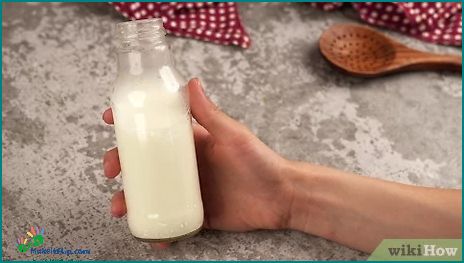
When it comes to warming milk, there are several methods you can use to achieve the perfect temperature. Whether you’re preparing a warm glass of milk for a bedtime routine or heating milk for a recipe, these methods will help you get the job done.
| Method | Description |
|---|---|
| Stovetop | One of the most common methods for warming milk is using the stovetop. Simply pour the desired amount of milk into a small saucepan and heat over low to medium heat. Stir occasionally to prevent scorching and continue heating until the milk reaches the desired temperature. |
| Microwave | If you’re short on time, the microwave is a convenient option for warming milk. Pour the milk into a microwave-safe container and heat on medium power for short intervals, stirring in between. Be careful not to overheat the milk, as it can easily boil and create a mess. |
| Hot Water Bath | For a gentle and even heat, you can warm milk using a hot water bath. Fill a larger container with hot water and place a smaller container with the milk inside. Let the milk sit in the hot water for a few minutes, stirring occasionally, until it reaches the desired temperature. |
| Steam Wand | If you have an espresso machine with a steam wand, you can use it to warm milk for lattes and other frothy drinks. Pour the milk into a metal pitcher and insert the steam wand, turning on the steam. Move the wand up and down to create a velvety texture while heating the milk. |
Regardless of the method you choose, it’s important to monitor the temperature of the milk closely to avoid overheating or scorching. Use a thermometer or test the milk with your finger to ensure it’s warm and comfortable to drink or use in your recipe.
Stovetop Method

The stovetop method is a classic way to warm milk and is often preferred by many. Here’s how to do it:
1. Pour the desired amount of milk into a small saucepan.
2. Place the saucepan on a stovetop burner over low to medium heat.
3. Stir the milk continuously to prevent it from scorching or forming a skin on the surface.
4. Heat the milk until it reaches the desired temperature. Use a thermometer to ensure accuracy.
5. Once the milk is warmed, remove the saucepan from the heat source.
6. Pour the warm milk into a mug or use it in your desired recipe.
Remember to be cautious while using the stovetop method and keep an eye on the milk to prevent it from boiling over or burning.
Microwave Method
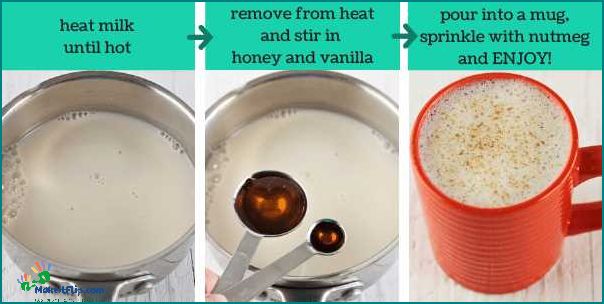
One of the quickest and easiest ways to warm milk is by using a microwave. Here is how you can do it:
1. Pour the desired amount of milk into a microwave-safe container.
2. Place the container in the microwave.
3. Heat the milk on high power for 30 seconds.
4. Carefully remove the container from the microwave using oven mitts or a towel.
5. Stir the milk to distribute the heat evenly.
6. Place the container back in the microwave and heat for another 15-30 seconds, depending on how warm you want the milk to be.
7. Remove the container from the microwave and give it a final stir.
It’s important to note that microwaves can heat milk unevenly, so it’s crucial to stir the milk well after each heating interval to avoid hot spots. Additionally, be cautious when handling the container as it may become hot during the heating process.
Using the microwave method is a convenient way to warm milk quickly, especially when you’re in a hurry or don’t have access to a stovetop. Just remember to monitor the heating time closely to prevent overheating the milk.
Hot Water Bath Method
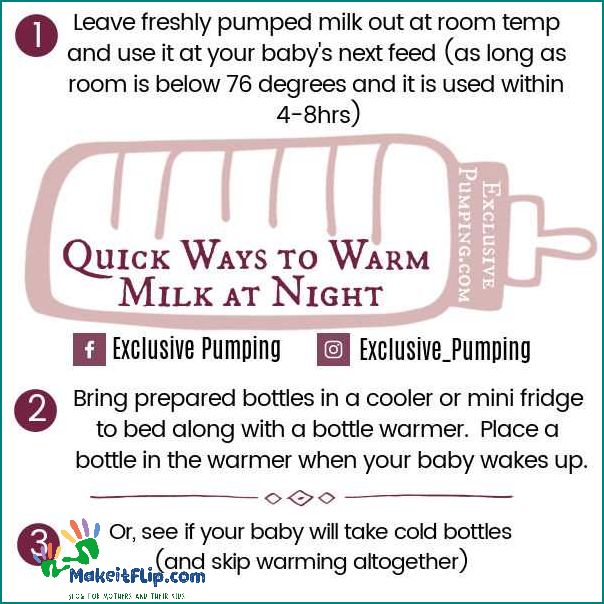
The hot water bath method is a simple and effective way to warm milk. It involves placing a container of milk in a larger container filled with hot water. This method is ideal for gently heating milk without scorching or boiling it.
To warm milk using the hot water bath method, follow these steps:
- Fill a larger container, such as a bowl or sink, with hot water. Make sure the water is hot but not boiling.
- Place the container of milk, such as a bottle or jar, into the hot water bath.
- Allow the milk to sit in the hot water for a few minutes, stirring occasionally to ensure even heating.
- Check the temperature of the milk using a thermometer. The ideal temperature for warmed milk is around 100°F (37°C).
- Once the milk has reached the desired temperature, remove it from the hot water bath and use it as desired.
It’s important to note that the hot water bath method may take longer to warm milk compared to other methods, such as using a microwave or stovetop. However, this method provides a gentle and consistent heat, which helps preserve the nutritional value and taste of the milk.
Remember to always use caution when handling hot water and milk to avoid burns. Additionally, never leave milk unattended while warming to prevent overheating or boiling.
| Pros | Cons |
|---|---|
| – Gentle and consistent heat | – Takes longer compared to other methods |
| – Preserves nutritional value and taste | – Requires monitoring and stirring |
| – Easy to do | – Risk of overheating if left unattended |
Tips for Warming Milk
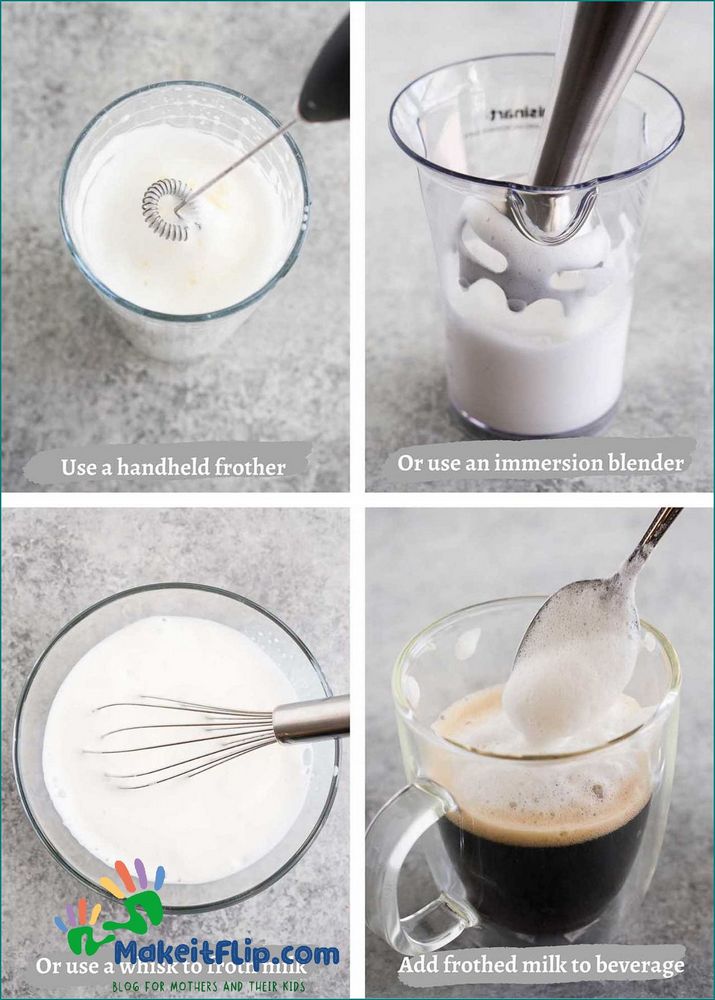
When it comes to warming milk, there are a few tips that can help you achieve the perfect temperature. Here are some methods to warm milk:
1. Stovetop Method: Place the milk in a small saucepan and heat it over low heat. Stir continuously to prevent scorching. Once the milk is warm, remove it from the heat and use it as desired.
2. Microwave Method: Pour the milk into a microwave-safe container and heat it in short intervals, stirring in between. Be careful not to overheat the milk, as it can become too hot and curdle. Test the temperature before using.
3. Warm Water Bath: Fill a larger bowl or basin with warm water. Place the milk container in the warm water and let it sit for a few minutes until the milk reaches the desired temperature. This method is gentle and helps to maintain the nutritional value of the milk.
4. Steam Method: If you have a steamer or espresso machine with a milk frother, you can use it to warm the milk. Simply pour the milk into the frothing pitcher and steam it until it reaches the desired temperature. This method is quick and convenient.
Remember to always test the temperature of the milk before using it, especially if it is for a baby or a recipe that requires specific temperature requirements. It is important to warm the milk gently to avoid scorching or curdling.
Use a Thermometer
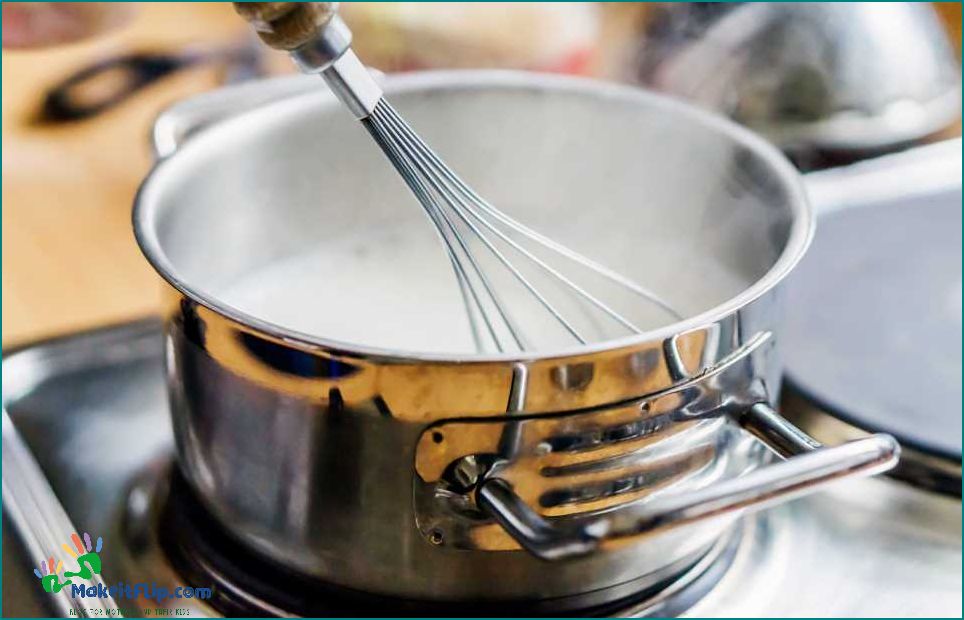
One of the most accurate ways to warm milk is by using a thermometer. This method ensures that the milk is heated to the desired temperature without overheating or scorching it. Here’s how to do it:
- Start by pouring the milk into a saucepan or a microwave-safe container.
- Place a food thermometer in the milk, making sure that the tip is submerged but not touching the bottom of the container.
- Heat the milk slowly over low heat or in short intervals in the microwave, stirring occasionally.
- Monitor the temperature of the milk using the thermometer. The ideal temperature for warming milk is around 100°F to 110°F (38°C to 43°C).
- Once the milk reaches the desired temperature, remove it from the heat source or microwave immediately to prevent overheating.
- Give the milk a final stir and it’s ready to be used or consumed.
Using a thermometer ensures that you have precise control over the temperature of the milk, which is especially important when preparing delicate recipes like custards or baby formula. It takes a bit more time and effort, but the results are worth it!
FAQ about topic How to Warm Milk The Best Methods and Tips
What is the best method to warm milk?
The best method to warm milk is to use a stovetop or microwave. Both methods are effective in heating milk quickly and evenly.
How long does it take to warm milk on the stovetop?
The time it takes to warm milk on the stovetop depends on the quantity of milk and the heat setting. Generally, it takes about 5-10 minutes to warm milk on low to medium heat.
Can I warm milk in the microwave?
Yes, you can warm milk in the microwave. It is a quick and convenient method. However, it is important to use a microwave-safe container and heat the milk in short intervals to avoid overheating or boiling.
What temperature should warmed milk be?
Warmed milk should be around 100-110°F (37-43°C). This temperature is ideal for various purposes like making hot beverages or adding to recipes.
Are there any tips for warming milk?
Yes, here are some tips for warming milk: 1) Stir the milk occasionally while heating to ensure even warming. 2) Use a thermometer to check the temperature of the milk. 3) Avoid overheating or boiling the milk as it can change its texture and taste. 4) If using a microwave, heat the milk in short intervals and stir in between to prevent hot spots. 5) Use a double boiler method if you want to warm the milk slowly and gently.
What is the best method for warming milk?
The best method for warming milk is to use a stovetop. Pour the milk into a saucepan and heat it over low heat, stirring constantly, until it reaches the desired temperature.
Can I warm milk in the microwave?
Yes, you can warm milk in the microwave. Pour the milk into a microwave-safe container and heat it in short intervals, stirring after each interval, until it reaches the desired temperature. Be careful not to overheat the milk, as it can easily boil over.
I’m Diana Ricciardi, the author behind Makeitflip.com. My blog is a dedicated space for mothers and their kids, where I share valuable insights, tips, and information to make parenting a bit easier and more enjoyable.
From finding the best booster seat high chair for your child, understanding the connection between sciatica and hip pain, to exploring the benefits of pooping in relieving acid reflux, I cover a range of topics that are essential for every parent.
My goal is to provide you with practical advice and solutions that you can easily incorporate into your daily life, ensuring that you and your child have the best possible experience during these precious years.
